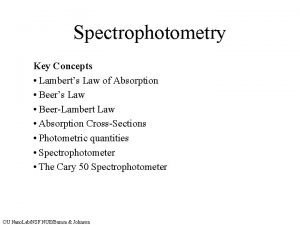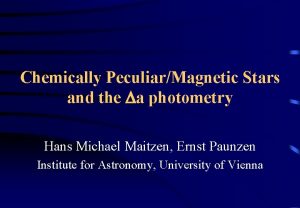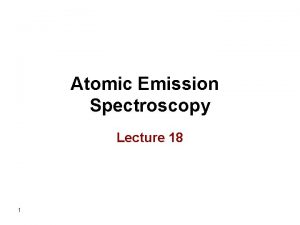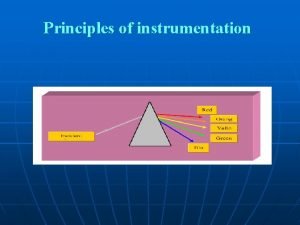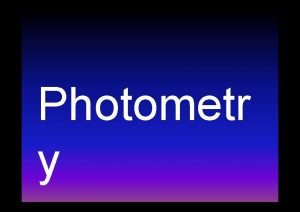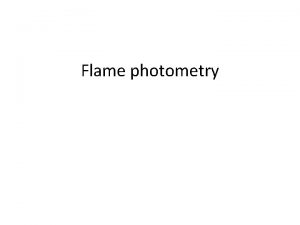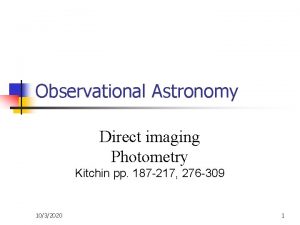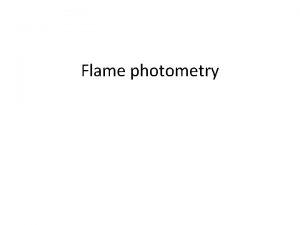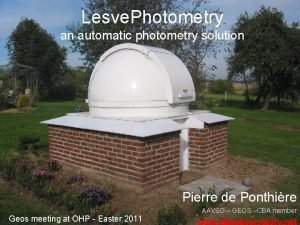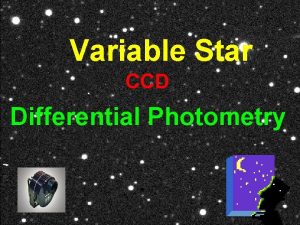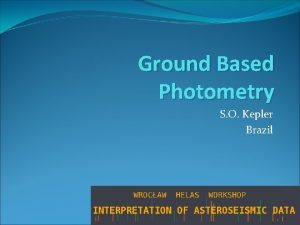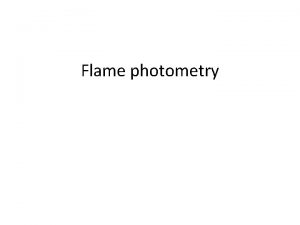Aperture Photometry Not too dependent on the particular


















- Slides: 18


Aperture Photometry • Not too dependent on the particular psf shape • Works well when in “clean” fields – not many nearby stars, and smooth sky background • Breaks down when object has a close companion

PSF Fitting Photometry • Semi-analytical approach: fit psfs with adjustable function • Make a good model on isolated stars; then fit to position, intensity, background of other stars • Works well when light from neighboring stars have overlapping psfs, interfering with background determination – fit models simultaneously to multiple stars, conserving flux • May not work so well with very crowded fields (hard to detect stars), variable background, or if psf is not well sampled/not well behaved in the wings overestimates brightness by 5 -25%


Original field | Nearby neighbors removed

Difference Image Photometry • Allows for atypical psf shapes, as well as variation across an image • Deals well with non-uniform background • Does better at identifying variables in crowded fields • ISIS (Alard 2000) is a popular publicly available program

Where. Here are theyvariables? are!

Removes background Orion Nebula Cluster (Irwin et al. )

Good for finding SNe too…

When to use which method? ?

Aperture vs. PSF: cluster field

ISIS vs. PSF: cluster field

Some Photometry Records… • Gilliland et al. (1993) : 0. 25 mmag photometry on 12 stars in M 67 • Everett & Howell (2001): 0. 19 mmag by binning multiple points • Hartman et al. (2005): 0. 36 mmag precision on stars in NGC 6791 • Lopez-Morales (2006): 1 mmag precision on V<9 stars

The “nitty-gritties”

Linearity

Guiding/Tracking

Flatfields: sky vs. dome screen 10% variation!

Fringing
 Not too broad and not too narrow
Not too broad and not too narrow Just about right scale
Just about right scale Too enough kahoot
Too enough kahoot Too much money is chasing too few goods
Too much money is chasing too few goods Too broad and too narrow examples
Too broad and too narrow examples Too broad and too narrow examples
Too broad and too narrow examples Too foreign for here too foreign for home
Too foreign for here too foreign for home Too broad and too narrow examples
Too broad and too narrow examples Too anointed to be disappointed meaning
Too anointed to be disappointed meaning Sadlier unit 1 level d synonyms
Sadlier unit 1 level d synonyms Beer's law transmittance
Beer's law transmittance Photometry
Photometry Photometry
Photometry What is the principle of photometry
What is the principle of photometry Psf photometry
Psf photometry Reflectance photometry principle
Reflectance photometry principle What is the principle of flame photometer
What is the principle of flame photometer Photometry
Photometry A lot of vs lots of
A lot of vs lots of










